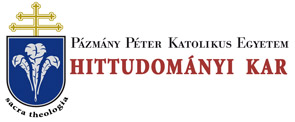Folia Theologica et Canonica 10. 32/24 (2021)
Ius canonicum
122 ALBERTO SORIA JIMENEZ, OSB Council, the possibility of requesting an indult is given to all the diocesan priests and groups of the faithful who wish to celebrate the liturgy with the typical edition of the 1962 Roman Missal; that is, a request that can be made to the diocesan bishop, it not being obligatory any more to go to the rightful Ordinary. In this way, St. John Paul II provided “guidelines for the use of the 1962 Missal; that document, however, did not contain detailed prescriptions but appealed in a general way to the generous response of Bishops”, as Benedict XVI recalls in paragraph 5 of GF. And it is within these guidelines that it will survive at least a quarter of a century, including the first two years of Benedict XVI’s pontificate. This point of view is maintained in the Apostolic Letter Ecclesia Dei, given motu proprio, of 1988, and in the rescript Quia peculiare munus, dated October 18th 1988, signed ex Audientia SS. mi and released by the Pontifical Commission ‘Ecclesia Dei ’.9 Therefore, throughout this long period of time it is possible to celebrate Holy Mass using the typical 1962 edition of the Roman Missal, but the guidelines given require the integration of certain universal general rules together with others of specific canonical nature, which could, in turn, be generated from the former, such as individual or sectorial titles. The decree Animarum bonum by the Congregation for Bishops, dated January 18th 2002, by which the personal Apostolic Administration “St. John Mary Vianney” was canonically established in Brazil, effectively changes and clarifies the status quo, at least in part.10 Since then, the typical edition of the 1962 Roman Missal may be used by any priest who is legitimately allowed to celebrate Holy Mass in the churches of that personal Apostolic Administration, and even without being incardinated in it. From this point on, a way towards “freedom of devotion” starts to emerge, respectful of the most varied spectrum of ritualistic traditions of the Church, which, theologically speaking, can only be considered as beneficial for the spiritual life of the faithful, for the worshippers of God are thus “in spirit and in truth” (Jn. 4:23-24), and real worship does not consist of a “practice of rites” which are more or less accepted by a specific church group, as if it were still necessary to maintain Old Testament attitudes. A further step in the same direction was the canonical establishment of the Good Shepherd Institute by means of the Decree Notre Seigneur by the Pontifical Commission Ecclesia Dei, dated December 8lh 2006, during the pontifi-9 Cf. Ioannes Paulus II, MP. Ecclesia Dei (2 iul. 1988): AAS 80 (1988) 1495-1498. See its Spanish translation in Carta apostólica “Ecclesia Dei ’’ del Sumo Pontifice Juan Pablo II en forma de “Motu Proprio”, in L’OsservatoreRomano. Edición en lengua espanola (10th July 1988)24. And also Pontificia Commissio Ecclesia Dei, Rescr. ex Audientia SS. mi “Quia peculiare munus ”(18 oct. 1988): AAS 82 (1990) 533-534. 10 Cf. C. pro Episcopis, Decr. Animarum bonum (18 ian. 2002): AAS 94 (2002) 305-308.
